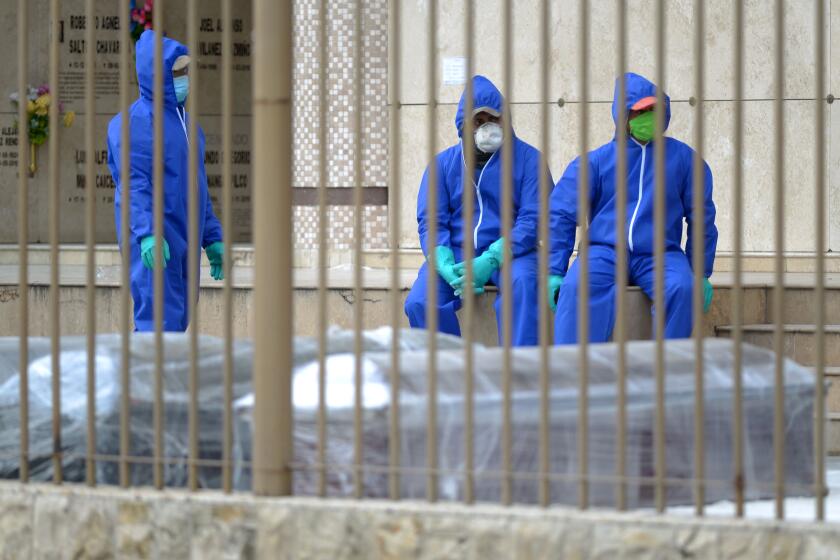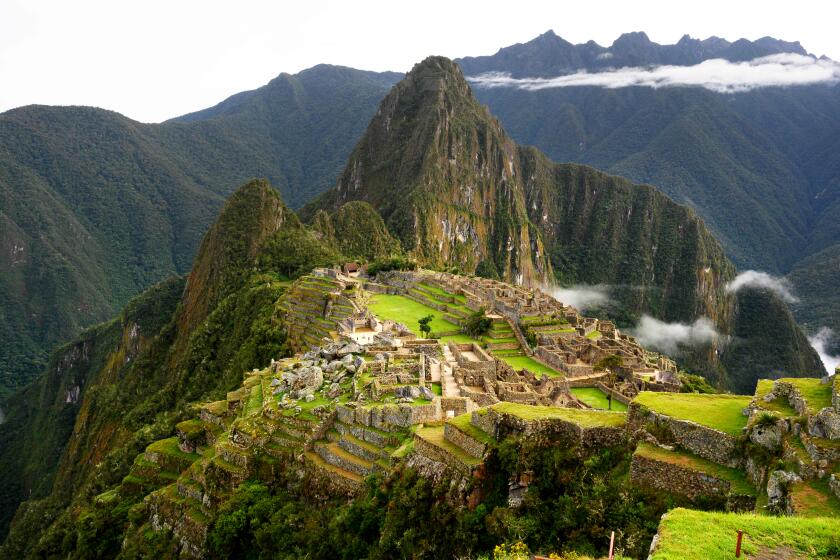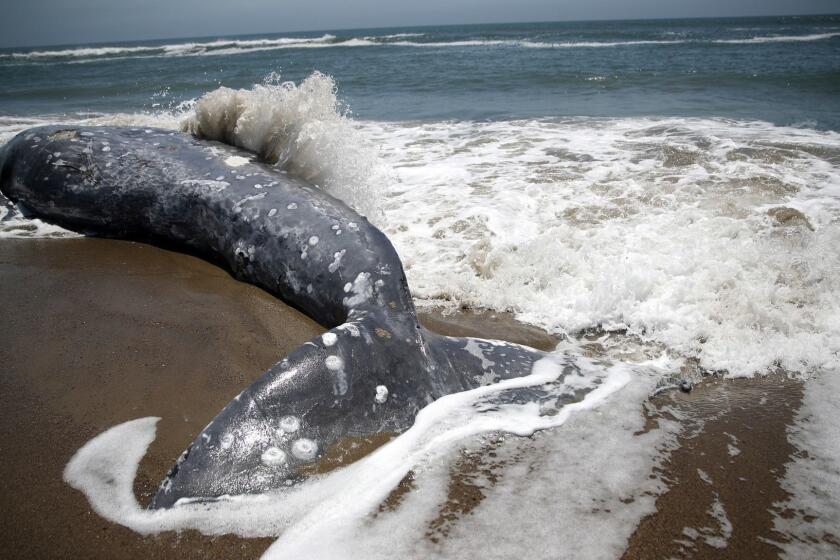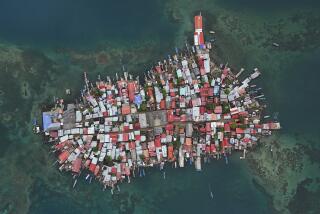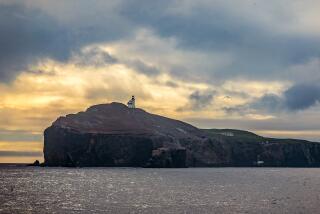The islands that once inspired Charles Darwin struggle to adapt to the coronavirus
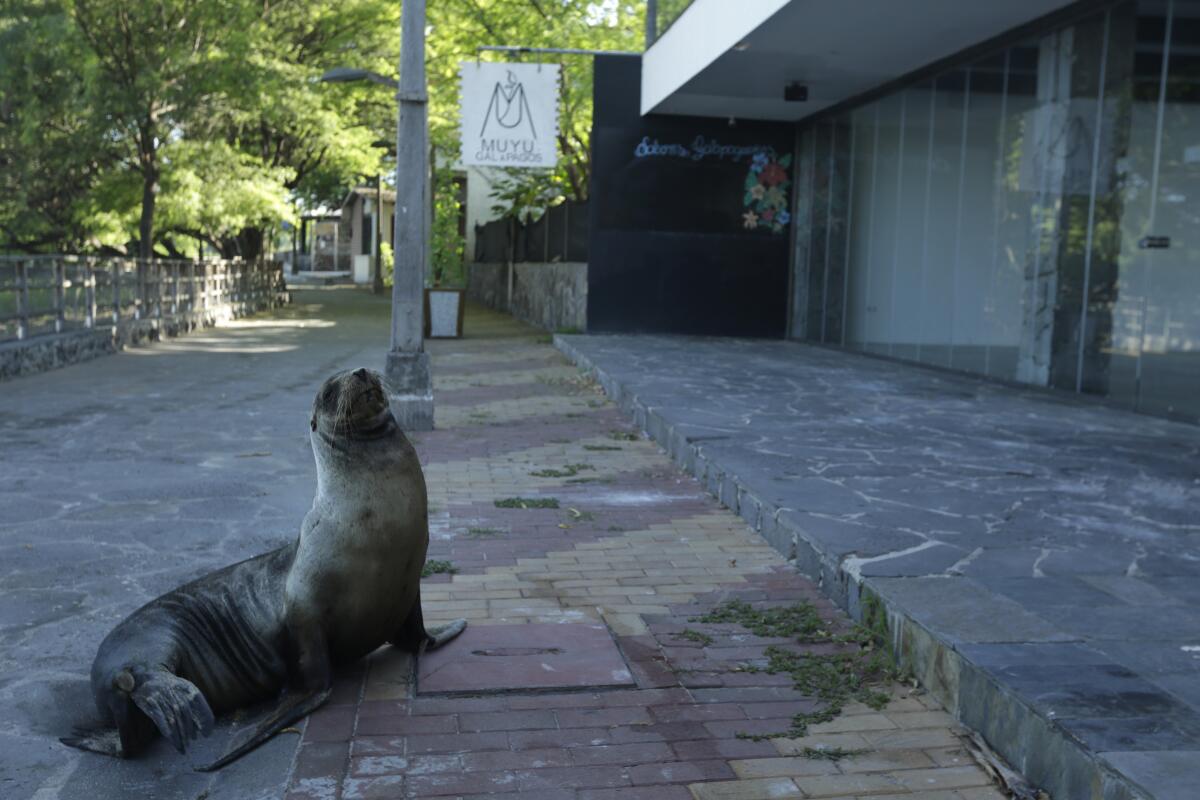
- Share via
SAN CRISTOBAL, Ecuador — Before the coronavirus, sudden life-threatening ailments among tourists, fishermen and others on the Galapagos Islands were considered so rare that hospitals didn’t have a single intensive care unit bed.
Now, officials are racing to equip medical teams on the remote islands with breathing machines while also trying to stanch an economic crisis that has left many of the 30,000 residents jobless.
The island chain’s famous isolation is now heightening its hardship.
For seven weeks now, not a single tourist has arrived at the UNESCO World Heritage site that inspired Charles Darwin. Studies of the archipelago’s unique marine and avian wildlife have halted. And residents are making urgent changes, such as growing carrots, peppers and tomatoes at home so they don’t go hungry.
“Galapagos is the land of evolution,” said Joseline Cardoso, whose small family-run hotel on Santa Cruz island is empty. “The animals have adapted, and we humans cannot be the exception.”
Ecuador is among the Latin American nations hit hardest by COVID-19, and authorities on the Galapagos Islands believe their first cases probably came from Guayaquil, the coastal city where hospitals turned away patients and the dead were left in homes for days.
Images of corpses in Ecuador stoked fear of the coronavirus’ effect on developing nations. Infections have yet to peak elsewhere in Latin America.
The storied islands have been relatively shielded by what happens 600 miles away on the mainland. A financial crisis two decades ago left many Ecuadorians penniless, but steady international tourism kept the Galapagos afloat. Last year, more than 275,000 people came to see the swimming iguanas, giant tortoises and birds with webbed feet the color of blue cotton candy.
Islanders rely on military aircraft to ferry the critically ill to Quito, the Ecuadorean capital, or Guayaquil. Many go to the mainland for appointments, and some hire doctors to fly in for major events such as childbirth.
Locals like to joke that, “in the Galapagos, it is prohibited to get sick.”
But the coronavirus has upended any sense of island immunity.
The islands’ first four cases were diagnosed in late March, all believed to have come from Guayaquil before travel was cut off. Soon after, the first island-associated death was announced: a worker in his 60s who had been on the Celebrity Flora yacht and fell ill after returning to Quito.
There are now 107 cases in the Galapagos, including about 50 crew members still aboard the Celebrity Flora, a luxury ship operated by a subsidiary of Royal Caribbean Cruises. It docked in time for passengers to get flights home.
Authorities have scrambled to equip hospitals, where there are only four ICU beds — about one for every 7,500 residents — and a lab to do virus tests. The Charles Darwin Foundation donated two of the new ventilators. In addition to military transports, a police aircraft is being mobilized. The president has offered one of his two planes, said Juan Sebastián Roldán, his Cabinet secretary.
Most of the cases have been mild, with only two people hospitalized.
Cities and attractions in countries around the world are too well-loved by tourists. Here’s what some are doing about it.
The bigger blow has been to tourism: At least 800 visitors usually arrive daily, and officials estimate that the islands already have lost at least $50 million, a quarter of the expected annual income.
“The base of our economy has entirely collapsed,” said Norman Wray, governor of the islands. “This is completely changing the future of tourism in the Galapagos.”
Ivan López, a guide and scuba teacher, was taking tourists around the islands when Ecuador ordered a lockdown. He was told to get off the boat and immediately was jobless. A 39-year-old father of two, he believes he can stretch his savings for six months but doesn’t know what he will do if the crisis drags on. He’s started a vegetable garden.
Already-high prices in supermarkets have skyrocketed. When López searched recently for disinfectant, he found alcohol at $40 a gallon. The islands largely rely on cargo ships, which have been slower to arrive.
“If the ships stop coming, it will be chaos,” he said. “We won’t have anything to eat.”
Fishermen go door-to-door selling tuna and wahoo to islanders, while farmers drive through neighborhoods yelling out “Tomatoes! Lemons! Greens!” on a megaphone.
Cardoso, who dreamed up her six-room hotel as part of a student project, said her new reality feels like a nightmare she’s yet to wake up from. The hotel is usually 75% occupied throughout the year, but all reservations have been canceled through July.
“To be with an empty hotel breaks your heart,” she said.
Scientists have also seen their work analyzing the Galapagos’ wildlife abruptly interrupted.
The islands have a rich history of scientific investigation and discovery since Darwin arrived aboard the Beagle in 1835, noting that species on the relatively new volcanic islands bore key differences from those in continental South America.
Humans have caused the islands irreparable harm, wiping out thousands of whales and tortoises, introducing invasive species such as insects, wild pigs and goats, and damaging the delicate vegetation.
At the Charles Darwin Foundation, researchers had been studying a species of parasitic flies, which likely arrived over 30 years ago on a plane or boat.
The flies threaten 20 bird species, and scientists have been collecting data on them for more than five years, but there will be blank spaces for 2020 that “we will not be able to recover,” said María José Barragán, the foundation’s chief executive and science director.
She also said scientists have been unable to see how species are being affected by the absence of humans, though that will be studied once they are back in the field.
Stay-at-home requirements have upended the field work of researchers, including that of scientists and volunteers who track migrating gray whales.
How soon the Galapagos Islands might be able to reopen is unclear. Ecuador’s government is allowing for a gradual opening in three stages. But the final stage is not a full return to normal and does not call for resuming national or international flights.
For many islanders, the pandemic has left them to meditate on their relationships with nature, industry and travel. Some wonder if they should continue to remain so dependent on tourism, while others say it highlights the need for self-sufficiency.
For Cardoso, the answer lies in the story of the finches, penguins and tortoises who share the islands with them.
“We have to put in practice the lesson of our history,” she said. “We have to adapt.”
More to Read
Sign up for Essential California
The most important California stories and recommendations in your inbox every morning.
You may occasionally receive promotional content from the Los Angeles Times.
